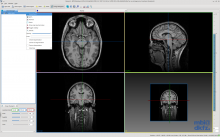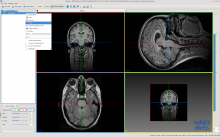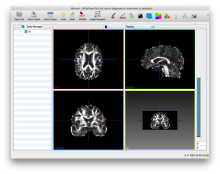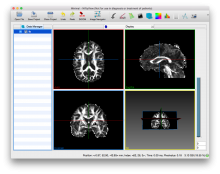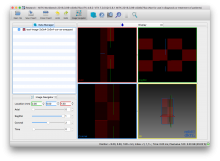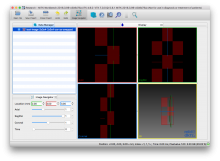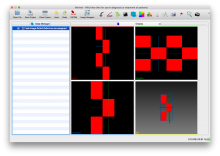See the screenshots with an image in which the coronal and axial axes are swapped and both are flipped.
After reinit the coronal window shows the axial view and the axial window shows the coronal view and the axes are swapped in the sagital window, so the image looks as if it was mirrored on a diagonal.
However, I would expect the coronal window to show the image in coronal orientation, the axial in axial orientation and the sagittal in sagittal orientation, and the patient's right should be on the left side of the axial and coronal windows and the patient's nose should be on the left side of the sagittal window, according to radiological convention that MITK follows.
So, basically, you should see the same as after global re-init if this is the only image in the data manager.
In case you find this invalid and you want to display the images in voxel space with the original orientations, then the annotations should be corrected in the render windows and there should be new annotations on each side of each window that show the directions 'L', 'R', 'A', 'P', 'S' and 'I'.
I have a simple vtk class to display the direction annotations that I would be happy to share with you guys.
Note that this is slightly related to T22114, although the original statement of T22114 was wrong. The images with flipped axes do show up in the renderers now, just in (IMO) wrong orientation. The check-pattern images are obviously not ideal to point this out. :-)
Here is the image that I used to make the screenshot.
PR160 that I did for T22114 fixes this issue.
